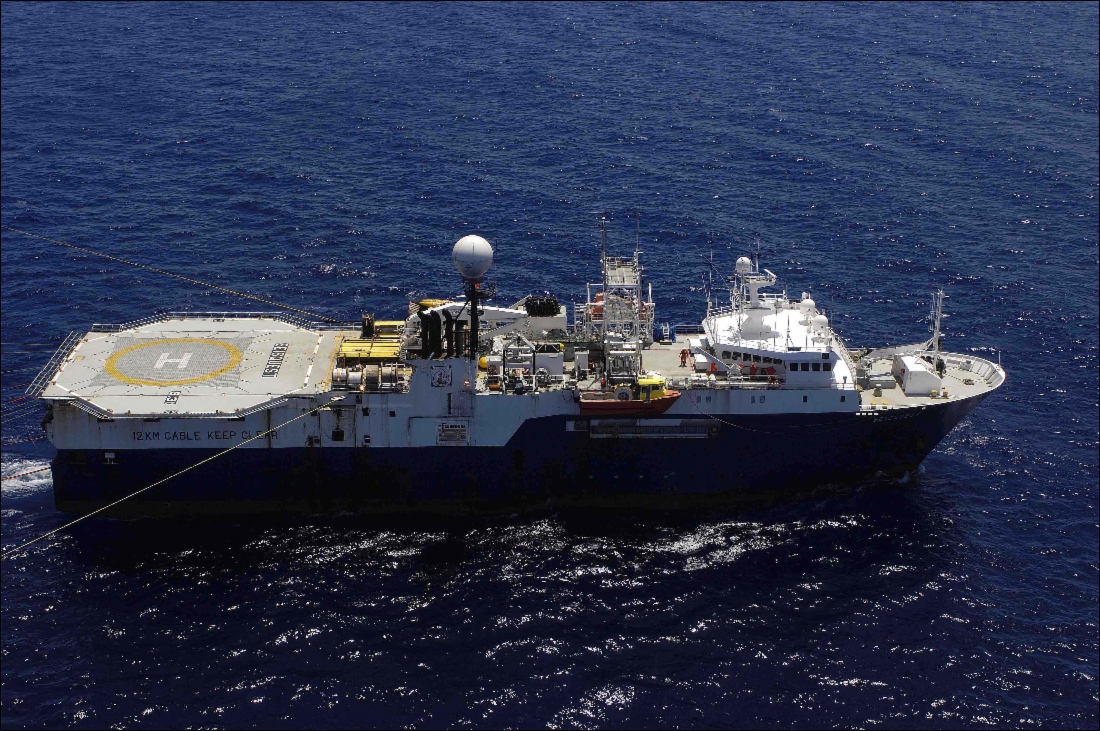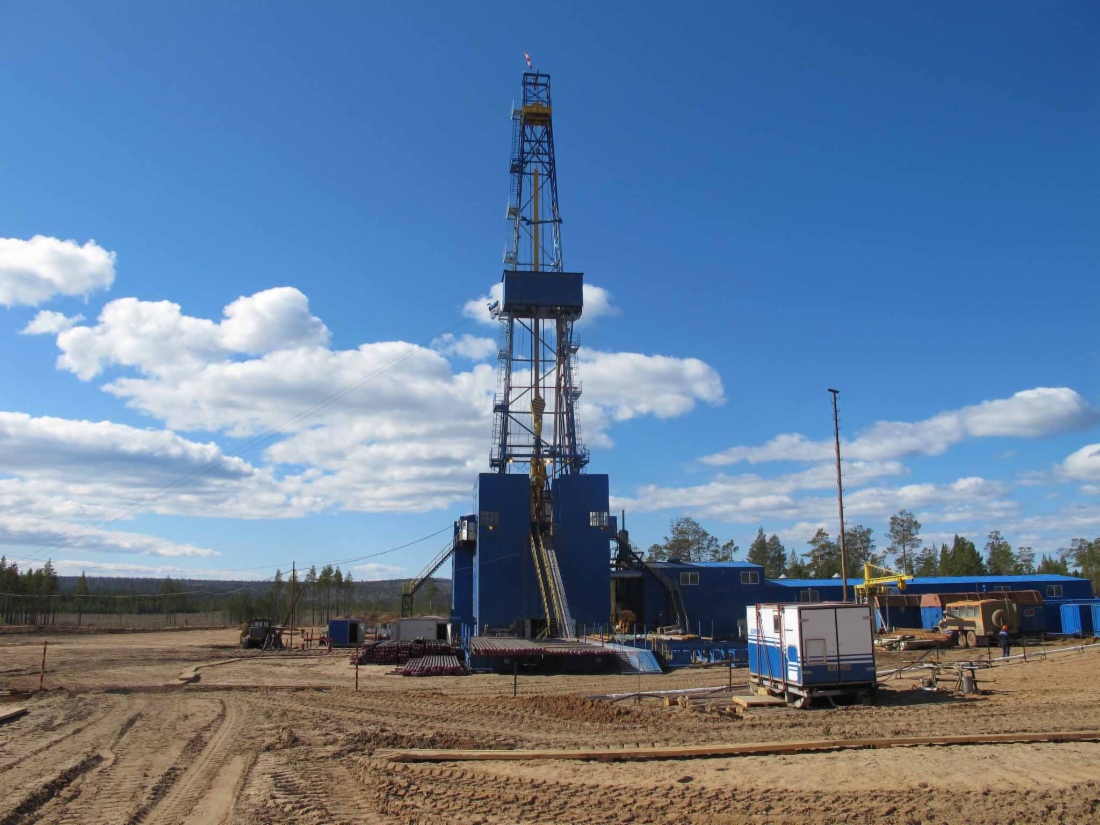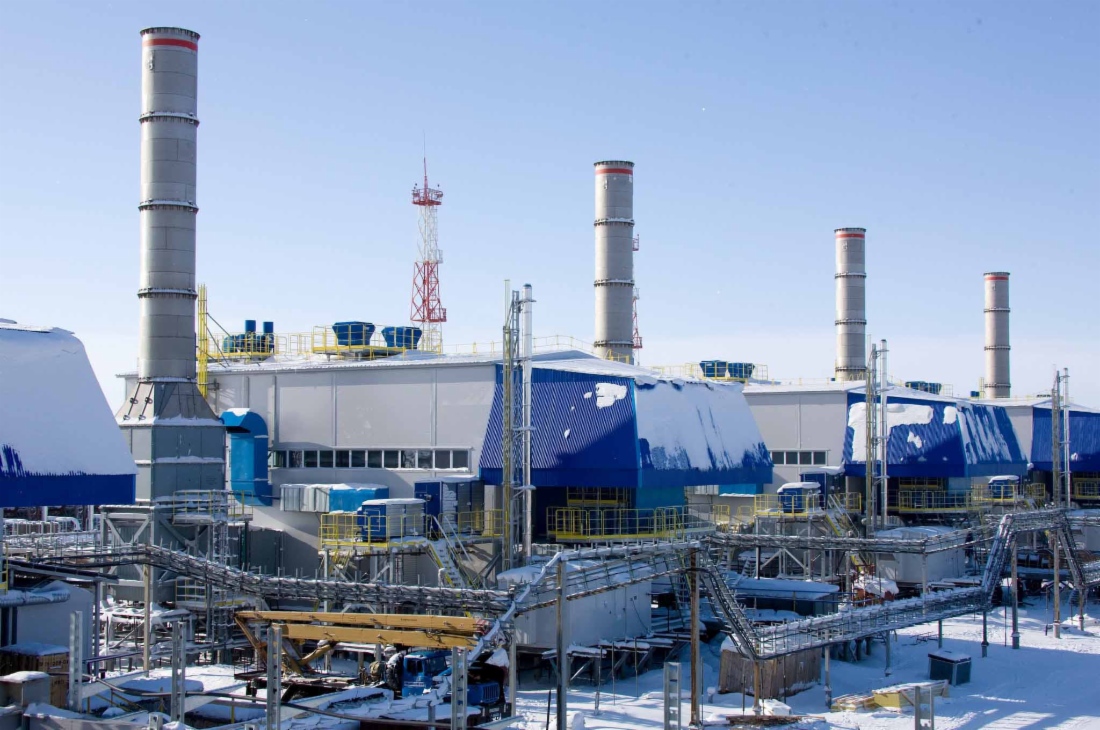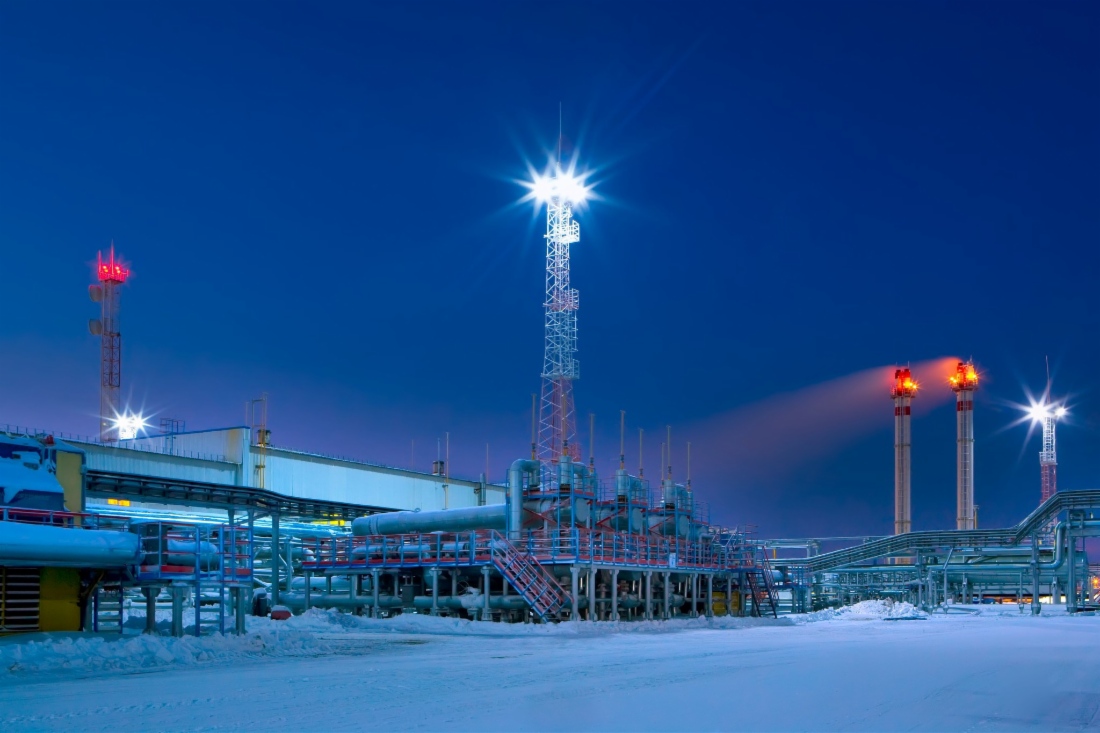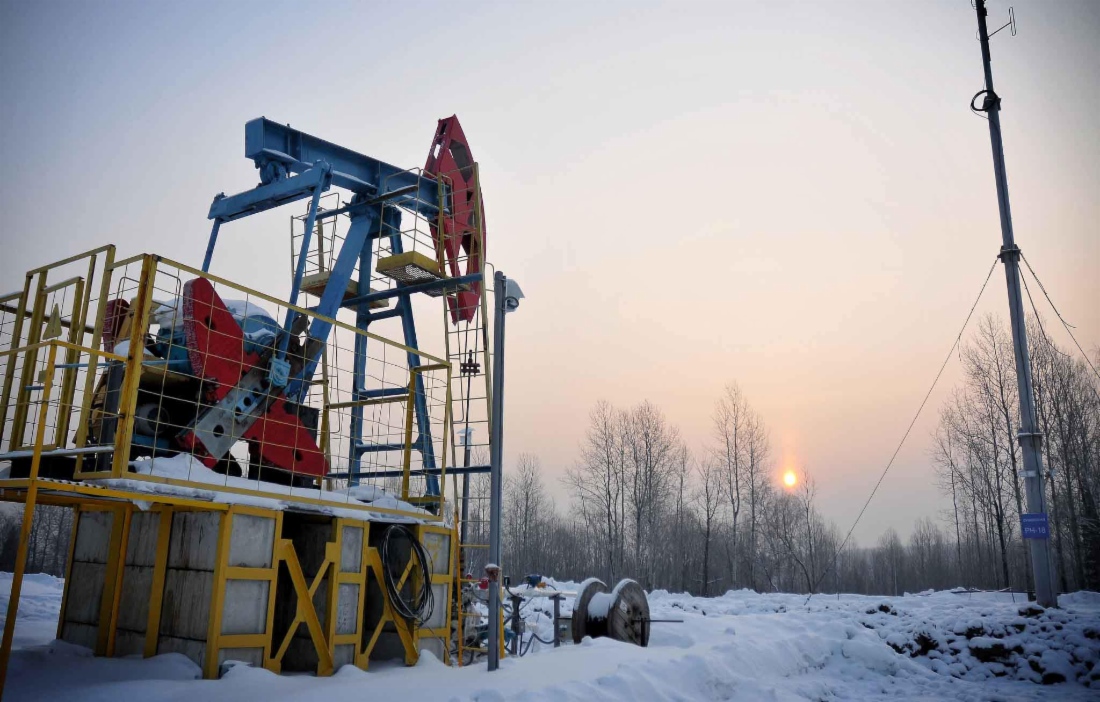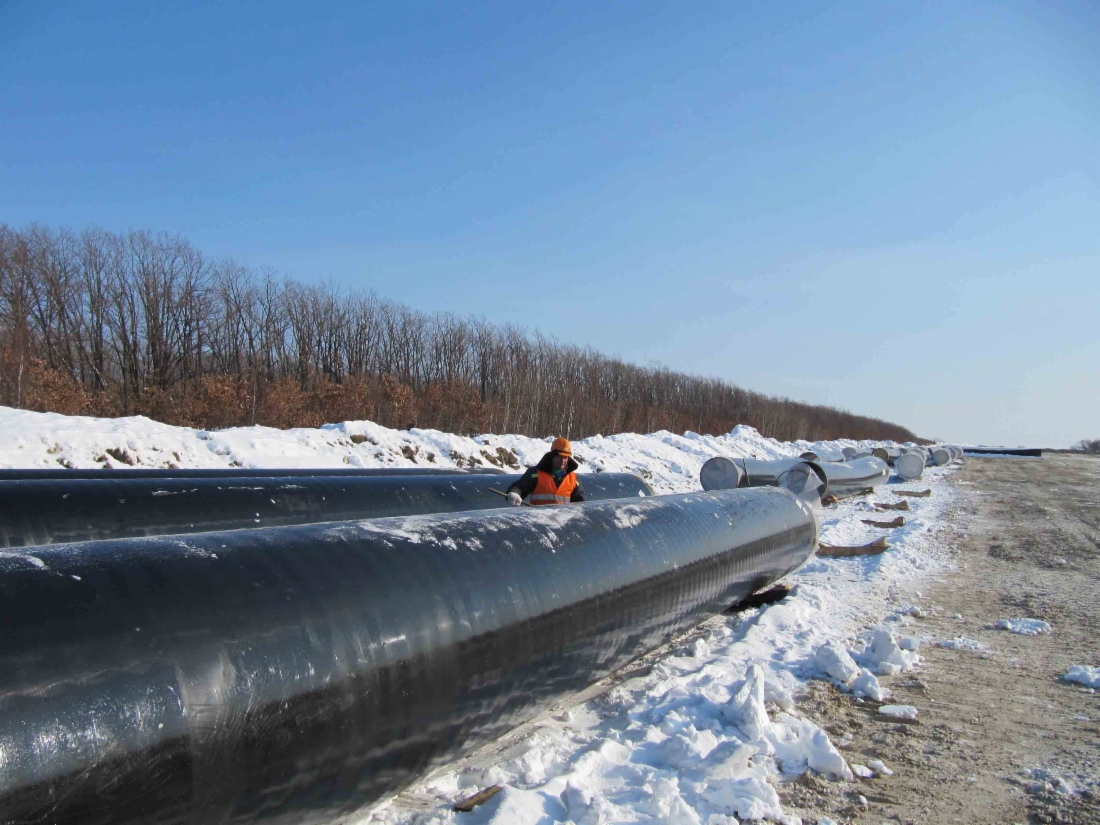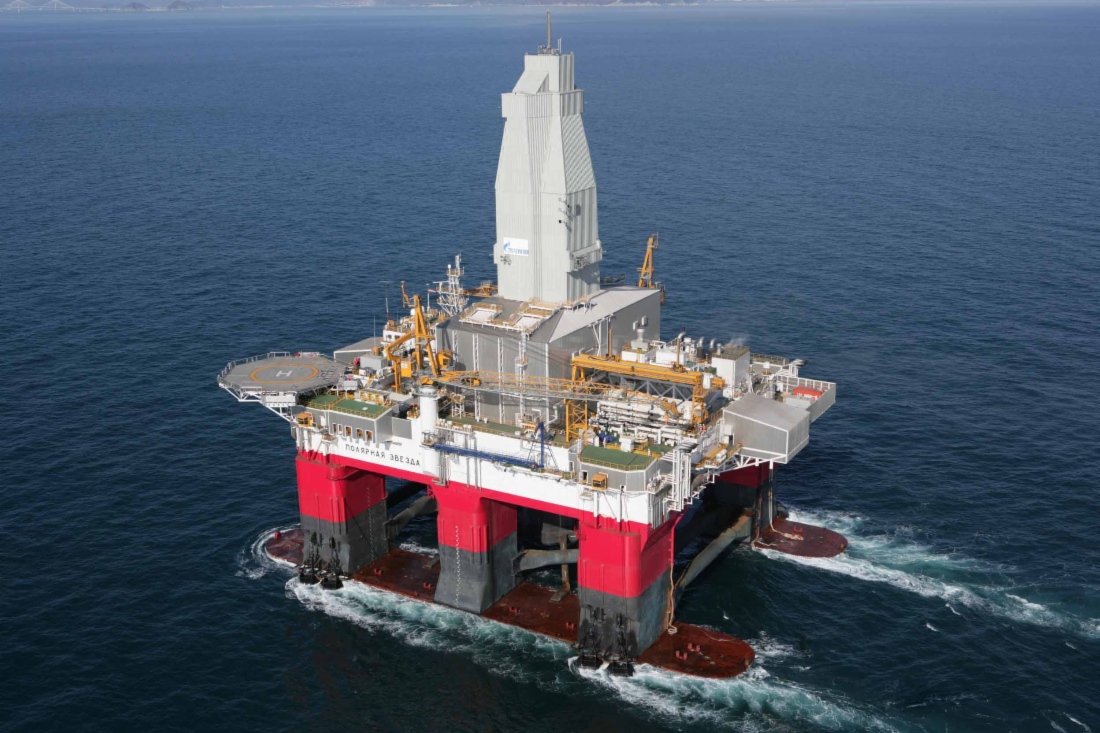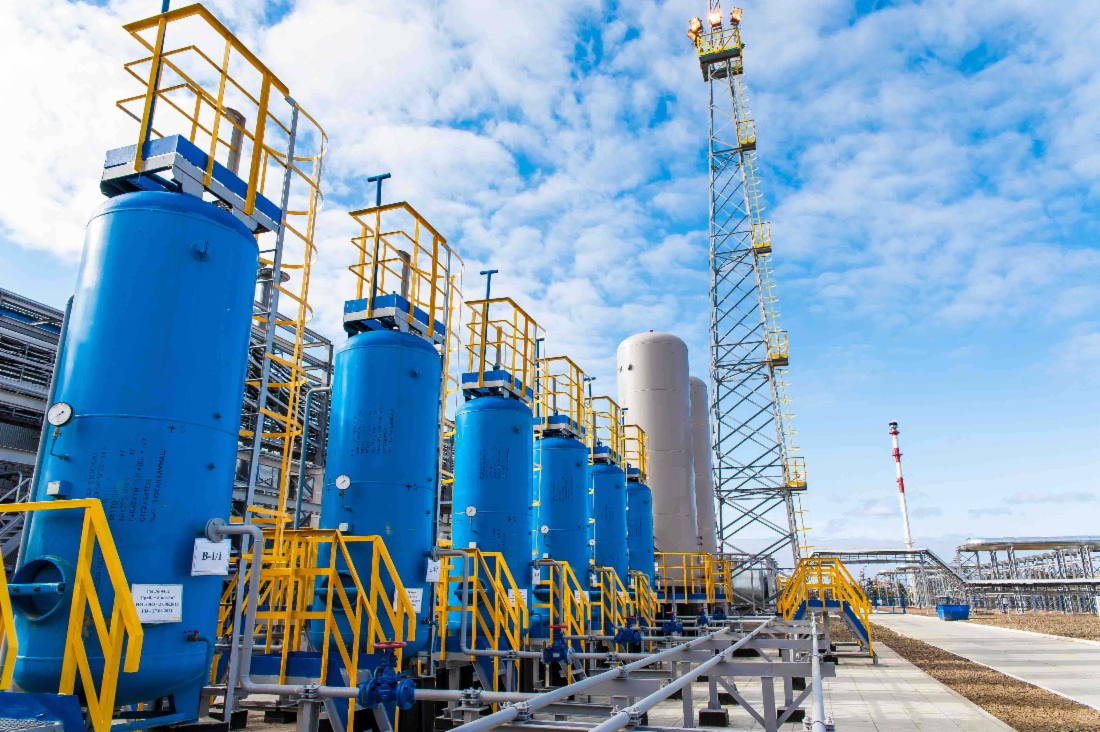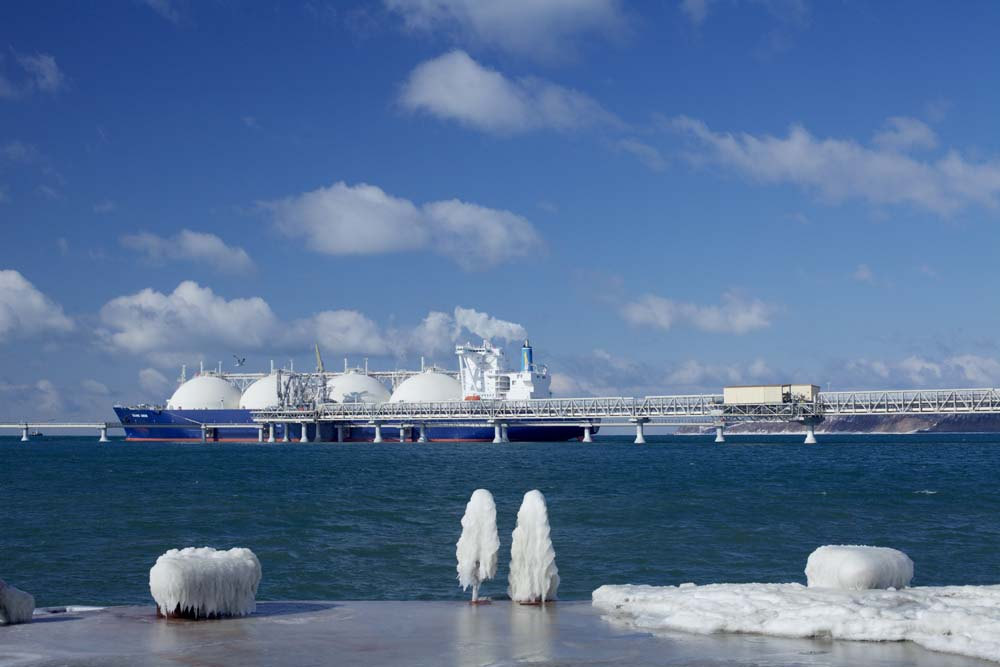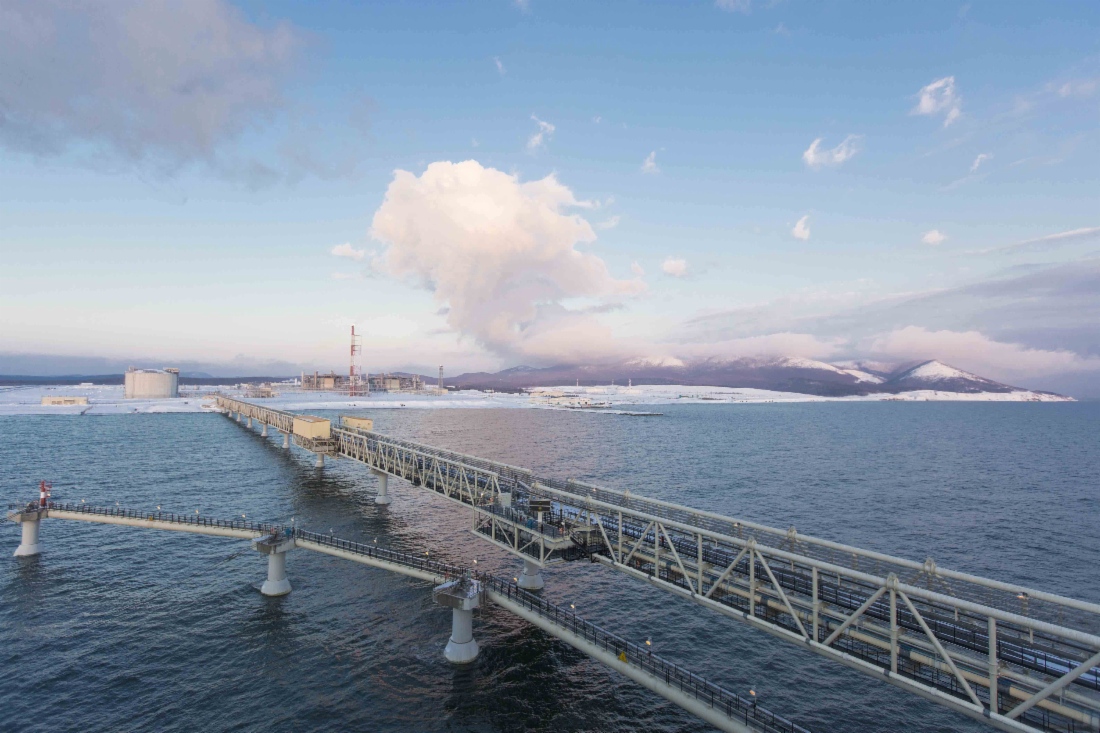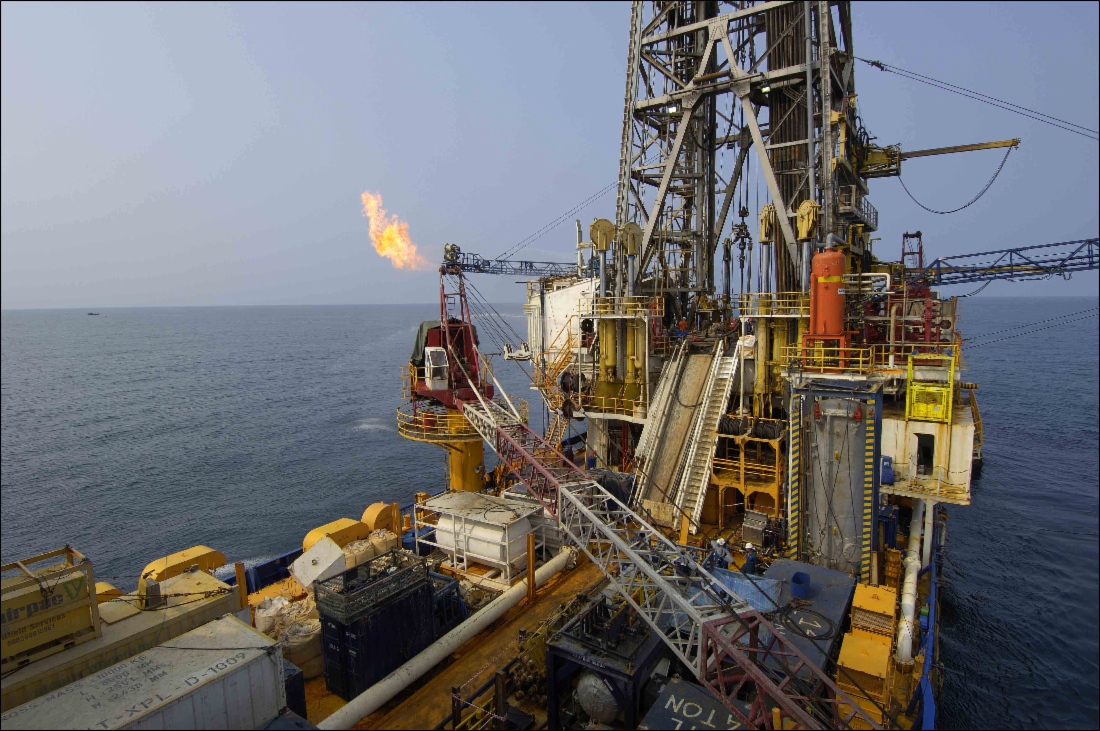Rapid development
May 5, 2016
Published in corporate Gazprom Magazine Issue 4, the interview was taken by Sergey Pravosudov
Vitaly Markelov, Deputy Chairman of the Gazprom Management Committee, answers questions from the magazine
- Mr. Markelov, how much gas and liquid hydrocarbons did Gazprom recover in 2015?
-
Gazprom had approved the 2015 gas production plan in the amount of 485.36 billion cubic meters, but due to the declining demand that amount was revised down to 414.1 billion cubic meters. The actual output was 418.5 billion cubic meters, including 8.4 billion cubic meters of associated petroleum gas. The maximum daily production – 1.555 billion cubic meters of gas – was achieved last year on October 22, with the maximum potential of 1.615 billion cubic meters.
While it had been expected to produce 15 million tons of gas condensate in 2015, the actual production amounted to 15.3 million tons, thus showing a 0.9 million ton increase as compared to 2014. Oil production in Gazprom Group hit a record high of 36 million tons last year, surpassing the 2014 level by 0.7 million tons. If you take subsidiary companies into account, the total oil production made up 53.5 million tons.
In 2015, Gazprom produced 418.5 billion cubic meters of gas, 15.3 million tons of gas condensate, and 53.5 million tons of oil.
Reserves growth
- What were the exploration results in 2015? What new fields and deposits were discovered?
-
In 2015, geological exploration covered the main oil and gas prospects in the Russian Federation (European Russia, Eastern and Western Siberia, and the Arctic and Far Eastern shelves) and foreign countries (Socialist Republic of Vietnam, Algeria, Tajikistan, and Kyrgyzstan). 2D seismic survey of 0.4 thousand linear kilometers and 3D seismic survey of 18.86 thousand square kilometers were carried out, 34 wells were constructed, and prospecting drilling was performed within the area of 124.3 thousand linear meters.
In 2015, the reserves growth in Russia accounted for 582 million tons of fuel equivalent, including 510.8 billion cubic meters of gas, 68.4 million tons of gas condensate, and 2.8 million tons of oil.
In 2015, the reserves growth in Russia accounted for 582 million tons of fuel equivalent, including 510.8 billion cubic meters of gas, 68.4 million tons of gas condensate, and 2.8 million tons of oil. The greatest contributors were the Yuzhno-Kirinskoye (213.2 billion cubic meters) and Chayandinskoye (205 billion cubic meters) oil, gas and condensate fields. Outside Russia, the El Assel license area in Algeria (RSHN field) accounted for an increase in the amount of 2.5 million tons of fuel equivalent, including 1.96 billion cubic meters of gas and 0.63 million tons of gas condensate.
Geological exploration has resulted in the discovery of eight new deposits (at the Imbinskoye field in the Krasnoyarsk Territory and the Zapadno-Tarkosalinskoye and Yuzhno-Russkoye fields in the Yamal-Nenets Autonomous Area) and two new fields (Padinskoye in the Yamal-Nenets Autonomous Area within Gazprom Dobycha Nadym’s operating area and Naryksko-Ostashkinskoye in the Kemerovo Region within Gazprom Dobycha Kuznetsk’s operating area). The reserve replacement ratio stood at 1.26.
- What are the plans for 2016?
-
The approved 2016 production plan is as follows: 452.45 billion cubic meters of gas, 15.6 million tons of gas condensate, and 38.9 million tons of oil. The increment of domestic reserves in 2016 is expected to reach 511.4 million tons of fuel equivalent, including 478.2 billion cubic meters of gas. The bulk of growth will be observed in Eastern Siberia and the Far East (Chayandinskoye, Kovyktinskoye, and Yuzhno-Kirinskoye fields). It is also anticipated to discover additional reserves in the Yamal-Nenets Autonomous Area and on the Kara Sea shelf.
The approved 2016 production plan is as follows: 452.45 billion cubic meters of gas, 15.6 million tons of gas condensate, and 38.9 million tons of oil. The increment of domestic reserves in 2016 is expected to reach 511.4 million tons of fuel equivalent, including 478.2 billion cubic meters of gas.
Yamal
- Tell us about the current results and planned production in the Yamal Peninsula.
-
Yamal is among the most strategically important oil- and gas-bearing regions in Russia. By 2030, the annual gas production may climb to 360 billion cubic meters there. The Bovanenkovskoye oil, gas and condensate field is the most well-researched and has the largest reserves. At present, Gazprom is building up its production capacities at the field. As of January 1, 2016, the facilities operated at Bovanenkovskoye include a comprehensive gas treatment unit with an annual aggregate capacity of 90 billion cubic meters of gas, a 375 MW booster compressor station, and 303 wells. The field’s Cenomanian-Aptian deposits will be developed at three gas production sites. With 1,460 MW of booster capacities and 775 wells, the sites will annually yield 115 billion cubic meters of gas when up and running.
The gas production sites were created with the use of cutting-edge technologies and technical solutions. Namely, a unified production infrastructure is used to extract gas from pay zones lying at various depths (520 to 700 meters for Cenomanian and 1,200 to 2,000 meters for Aptian-Albian deposits). It helps reduce construction expenditures and improve the field’s productivity.
- Could you update us on the construction of the pipeline system for gas transmission from the Yamal Peninsula? What will be done within the next few years?
-
With a view to convey gas from Yamal, we are building a unique gas transmission system, first of its kind in Russia, which will connect the Yamal Peninsula to the central regions of the country. Yamal gas will run via the Yamal – Ukhta section and further along the Ukhta – Gryazovets, Gryazovets – Torzhok, Gryazovets – Yaroslavl, and Ukhta – Pochinki pipelines.
In the coming years we plan to construct and put on stream the second string of the Bovanenkovo – Ukhta pipeline with a total length of 1,266 kilometers (827.4 kilometers are on line already) and additional workshops for nine compressor stations with an aggregate capacity of 830 MW.
- Please tell us about the Ukhta – Torzhok 2 project.
-
The project for the construction of the second string (Yamal) of the Ukhta – Torzhok gas trunkline system includes a 970-kilometer linear section of the gas pipeline and the expansion of seven operating compressor stations: Sosnogorskaya, Novosindorskaya, Novomikunskaya, Novourdomskaya, Novoprivodinskaya, Novonyuksenitskaya, and Novoyubileynaya (total capacity of 625 MW).
In 2013, the project obtained approvals from state and local experts. In 2014, it was approved by Gazprom’s management. The engineering documentation has been prepared for all segments of the linear section and is being developed for the compressor stations.
The comprehensive schedule of the investment project provides for the phased commissioning of the following capacities:
- five segments of the linear section with a total length of 500.4 kilometers, to be commissioned in 2017;
- five segments of the linear section with a total length of 469.6 kilometers and three compressor stations (Sosnogorskaya, Novomikunskaya, and Novoprivodinskaya) with an aggregate capacity of 250 MW, to be commissioned in 2018;
- four compressor stations (Novosindorskaya, Novourdomskaya, Novonyuksenitskaya, and Novoyubileynaya) with an aggregate capacity of 375 MW, to be commissioned in 2019.
The project is advancing strictly in accordance with the construction schedule. At present, construction and installation operations are in progress at five priority segments of the linear section with a total length of 500.4 kilometers. The other segments are currently undergoing preparations. It is planned to start the main construction and installation operations in the third quarter of 2016 and to conclude the construction in 2018. Moreover, the construction of three compressor stations is planned to start this year.
- What are the prospects of gas and liquid hydrocarbon production from the Achimov deposits? What was the production level in 2015 and how much do you plan to extract in 2016?
-
Today we are actively developing blocks 1 and 2 of the Achimov deposits at the Urengoyskoye oil, gas and condensate field. In 2015, the production at this area made up 6.96 billion cubic meters of gas and 3.25 million tons of gas condensate. In 2016, we plan to increase the production to 8.81 billion cubic meters of gas and 4 million tons of gas condensate. In the near term, it is planned to commence the development of blocks 3, 4, and 5. The design solutions for the Achimov deposits development at the Urengoyskoye field were approved by the Central Development Committee of the Federal Subsurface Use Agency. Upon full realization thereof, the annual production will amount to 12.8 million tons of gas condensate and 36.8 billion cubic meters of gas.
The Yamburgskoye field is also expected to contain significant reserves of oil, gas and condensate within the Achimov deposits. However, these reserves have been poorly studied (some 10–12 per cent), which necessitates extensive geological exploration.
Eastern Siberia
- When will the Chayandinskoye field come on stream? How much gas and liquid hydrocarbons will it produce?
-
Last year, we continued pilot production at the oil rim of the Botuobinsky horizon of the Chayandinskoye field (2.4 thousand tons of oil produced there in 2015). We plan to start gas production at the Chayandinskoye field in late 2018. The field is projected to reach its full design capacity in 2022, i.e. in its fourth development year. At full capacity the field will produce 25 billion cubic meters of gas, 1.9 million tons of oil, and 0.4 million tons of gas condensate annually.
In December 2011, Gazprom was granted licenses for the Verkhnevilyuchanskoye, Tas-Yuryakhskoye, Sobolokh-Nedzhelinskoye, and Srednetyungskoye fields located in the Republic of Sakha (Yakutia). According to the estimate made by Gazprom VNIIGAZ, the potential gas production from this group of fields may reach 18 billion cubic meters per year. Exploration activities are currently underway.
- When will the Kovyktinskoye field come on stream?
-
The commercial development of the Kovyktinskoye field with gas flowing into a trunkline is planned to start in 2022. In 2024, the field is expected to reach its design capacity of 25 billion cubic meters of gas per year. The total number of production wells will amount to 514 over the entire development period.
We are now at the stage of pilot development. Since 2013, the experimental membrane unit for helium recovery from high-pressure natural gas has been tested at the Kovyktinskoye field.
- What is the construction period for the Power of Siberia gas pipeline?
-
We plan to complete the construction of the Power of Siberia gas trunkline simultaneously with the commissioning of the Chayandinskoye field – in the fourth quarter of 2018. Later on, we will boost gas supplies according to the contract in parallel with bringing on stream the gas transmission capacities provided for by the project.
The Power of Siberia gas trunkline will be the main thoroughfare for gas exports to China within the gas transmission system linked to the Yakutia and Irkutsk gas production centers. Its total length will exceed 4.5 thousand kilometers and the aggregate capacity of its nine compressor stations will stand at 1,286 MW.
At the first stage we will build the Power of Siberia section from the Chayandinskoye oil, gas and condensate field to the border with China near Blagoveshchensk. At the second stage we will connect the Yakutia gas production center to the Irkutsk center. At the third stage we will expand the gas transmission capacities of the section from the Chayandinskoye field to Blagoveshchensk. Taking into account the gradual build-up of commissioned production and transmission capacities, it is planned to keep the annual contractual throughput at 38 billion cubic meters of gas.
- Does Gazprom plan to convey the gas of independent producers via the Power of Siberia gas pipeline?
-
As you know, Gazprom signed the 30-year Sales and Purchase Agreement with China National Petroleum Corporation for the annual supply of 38 billion cubic meters of gas via the eastern route. Should the Chinese party be interested, we will be able to increase gas supplies via this route. However, China says that the current contractual volume is sufficient for meeting the existing and forecasted demand for Russian gas imports via this route.
It should be noted that the negotiating process with CNPC has been affected by the liberalization of Russian liquefied natural gas (LNG) exports, as our Chinese partners referred to the option of receiving Russian gas as LNG in order to put pressure on Gazprom in terms of pricing. This has had a negative effect on the Russian-Chinese negotiations regarding other projects for Russian gas supply.
- Please tell us about the ongoing CBM project. How much coalbed methane was produced in 2015?
-
Methane production from the coal seams of Kuzbass brings promising opportunities for the socio-economic development of the Kemerovo Region. The project will increase the regional gasification level, enhance mine safety, improve the ecological situation, and create new jobs.
In accordance with the action plan and geological survey assignments for its licensed block, Gazprom Dobycha Kuznetsk has performed geological exploration in the top-priority areas, namely the Taldinskoye and Naryksko-Ostashkinskoye CBM fields, since 2009. To date, 33 exploratory wells have been constructed and brought into pilot operation. More than 43 million cubic meters of gas have been extracted since the start of test production. In 2015, the actual gross production amounted to 13.6 million cubic meters of gas, including 0.4 million cubic meters used as a vehicle fuel and 3.4 million cubic meters used for power generation.
Sakhalin
- What are the plans regarding the production of gas and liquid hydrocarbons offshore the Sakhalin Island?
-
Gazprom established the Sakhalin gas production center under the Development Program for an integrated gas production, transportation and supply system in Eastern Siberia and the Russian Far East, taking into account potential gas exports to China and other Asia-Pacific countries.
The bulk of natural gas production at the Sakhalin gas production center comes from the Kirinskoye and Yuzhno-Kirinskoye fields developed under the Sakhalin III project. In 2015, the Kirinskoye field produced some 600 million cubic meters of gas and 100 thousand tons of gas condensate. This year, the Company plans to recover about 1.12 billion cubic meters of gas and 182 thousand tons of gas condensate. The construction of production wells at the Kirinskoye field continues. Drilling is performed with Gazprom’s own floating drilling rigs, Polyarnaya Zvezda and Severnoye Siyaniye.
At present, the Yuzhno-Kirinskoye field has eight prospecting and exploratory wells. The field is expected to come on stream in 2021. It is forecasted to produce 21 billion cubic meters of gas.
At present, the Yuzhno-Kirinskoye field has eight prospecting and exploratory wells. The field is expected to come on stream in 2021. It is forecasted to produce 21 billion cubic meters of gas (37 production wells in total). The field is expected to reach the design capacity in the eleventh year of its development.
- How did the sanctions imposed on the Yuzhno-Kirinskoye field affect these plans?
-
As you know, the US and EU sanctions apply to the procurement of American and European equipment for deep-water (over 500 feet, or 150 meters deep) hydrocarbon (oil) production and to the development of the Yuzhno-Kirinskoye field. Today, the impact of the sanctions on geological exploration is not significant. In order to bore prospecting wells at the Yuzhno-Kirinskoye field, the Company employs drilling contractors from the countries that refrained from imposing economic sanctions on Russia. The same practice can be applied to high-tech subsea equipment. Gazprom’s experts believe that the US and EU sanctions won’t significantly affect the commissioning timeframe of the Yuzhno-Kirinskoye field.
- Will the third production train of the LNG plant be built within the Sakhalin II project?
-
The possibility of constructing the third production train was foreseen as early as at the design and construction stage of the first two production trains of the LNG plant in the Prigorodnoye settlement. In February 2014, Gazprom and Royal Dutch Shell signed the Memorandum providing for the elaboration of project documentation for the third production train of the LNG plant within the Sakhalin II project.
Experts have developed an integrated concept for the construction of an LNG plant production train with a capacity of up to 5.4 million tons per year, an additional LNG storage facility, and port installations, as well as for the build-up of transport capacities from the Onshore Processing Facility in the north of the Sakhalin Island to the LNG plant.
In June 2015, Gazprom and Royal Dutch Shell signed the Memorandum to construct the third production train of the LNG plant within the Sakhalin II project. The Memorandum sets out the target dates for the design stage and overall project implementation. It also outlines the further steps and basic principles of interaction between the parties during project preparation for the final investment decision. Last December, Sakhalin Energy Investment Company Ltd. – the Sakhalin II project operator – started to elaborate the project documentation.
Vietnam and Kyrgyzstan
- Please comment on gas production prospects in Vietnam.
-
Based on the 1992 Production Sharing Agreements for licensed blocks 05–2 and 05–3, which Gazprom Group joined in 2013, we are developing the Moc Tinh and Hai Thach fields. The project is at the production stage. Pursuant to the development plan, two production platforms, an integrated gas treatment platform, a floating storage terminal for liquid hydrocarbons, and a submarine pipeline and cable system have been built. The construction of production wells is underway. The commercial production of hydrocarbons in the area started in 2013. We expect to achieve the planned gas production level of 2 billion cubic meters per year in 2016. It is planned to complete development drilling in the first half of 2017.
At the same time, Gazprom is actively engaged in hydrocarbon prospecting and exploration in Vietnam. The analysis of geological and geophysical data helped identify 22 prospective formations, seven of which have been prepared for exploratory drilling. Two deep-water appraisal wells have been constructed at the Than Bien formation. A methane field (with a methane content of up to 98 per cent) has been discovered. Our current activities include the reinterpretation of seismic data and the rapid estimation of gas reserves, which will serve as the basis for the exploration feasibility study at the discovered field.
- What are Gazprom’s plans for Kyrgyzstan?
-
There, Gazprom is executing Gazprom Kyrgyzstan’s Investment Program for 2015–2017. The program provides for the construction and reconstruction of over 400 kilometers of gas trunklines and pipeline branches; the reconstruction of the Sokuluk compressor station, ten gas distribution stations and four CNG filling stations; and the building of two liquefied natural gas intake, storage and regasification stations, as well as distribution systems. By implementing the Investment Program, we will ensure the transit of natural gas to the Republic of Kazakhstan in the amount of up to 450 thousand cubic meters per hour.
In accordance with the General Scheme of Gas Supply to and Gasification of the Kyrgyz Republic until 2030, the gasification level of Kyrgyzstan will gradually increase from today’s 26 per cent to 60 per cent. Gasification will cover every region of the country. Social projects will be carried out at the same time.
Gazprom and Gazprom Kyrgyzstan’s main objectives for the near future are as follows:
- increasing gas sales volumes;
- executing investment projects aimed at the comprehensive gasification of Kyrgyzstan;
- automating production processes and enhancing business efficiency;
- bringing business activities to at least a break-even level.
Moreover, in 2007 Gazprom and the Government of the Kyrgyz Republic signed the Agreement on the main terms of conducting geological surveys of subsurface resources in Kyrgyzstan’s oil- and gas-prospective areas with the possibility of subsequent development of discovered fields and crude hydrocarbon production. The Kugart and Eastern Mailisu IV blocks located in the southwest of the country are considered priority areas for geological exploration. In 2015, Gazprom started the geophysical works at its licensed blocks in Kyrgyzstan, which are expected to identify the prospective formations for further appraisal and exploratory drilling.





